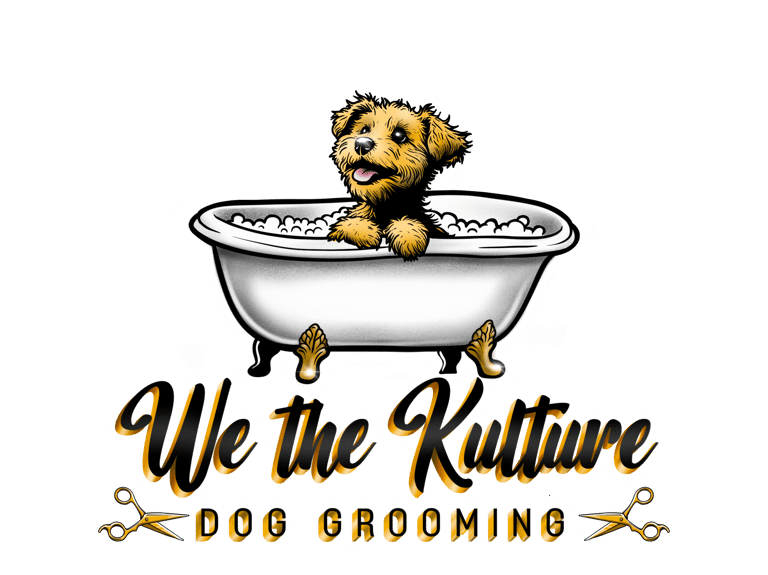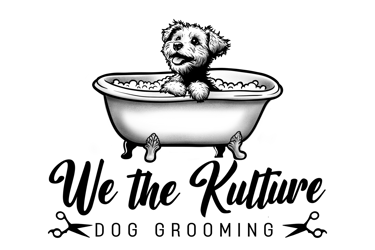How Often Should You Groom Your Dog?
Not sure how often your dog needs grooming? This breed-by-breed guide breaks down the ideal schedule for every coat type, with pro tips to keep your pup healthy, comfortable, and looking their best year-round.
2 min read


Note: Some of the links on this site are affiliate links, which means I may earn a small commission if you click through and make a purchase. It doesn’t cost you anything extra, and I only share information I genuinely believe you’ll find helpful.
Why Grooming Frequency Matters
If you’ve ever wondered, “Am I taking my dog to the groomer often enough?” — you’re not alone. Grooming isn’t just about keeping your pup looking cute for Instagram. It’s about their comfort, skin health, and even their overall well-being.
As a professional groomer for nearly a decade, I’ve seen it all — from perfectly maintained coats to pups who’ve gone a little too long between visits (hello, mystery tangles!). The truth is, how often your dog needs grooming depends on more than just their breed. Coat type, lifestyle, and even the season can all play a role.
Factors That Affect Grooming Needs
Before we get into specific breeds, let’s talk about the main things that determine how often your dog should be groomed:
Coat Type – Long, curly, or double coats need more frequent attention than short, smooth coats.
Lifestyle – Dogs who love rolling in the mud or swimming will need more upkeep.
Health & Skin Conditions – Sensitive skin or allergies may require special products and more frequent baths.
Seasonal Changes – Some breeds “blow” their coats in spring and fall, which means extra brushing and de-shedding.
Breed-by-Breed Grooming Frequency Guide
Here’s a general guide based on coat type. Keep in mind, every dog is unique — so use this as a starting point, not a hard rule.
Short-Haired Breeds
(Beagle, Boxer, Dalmatian, Doberman)
Frequency: Bath and brush every 6–8 weeks
Why: Short coats don’t mat easily, but they still shed and collect dirt.
Pro Tip: A rubber curry brush works wonders to remove loose hair and boost circulation.
Long-Haired Breeds
(Shih Tzu, Maltese, Afghan Hound, Yorkshire Terrier)
Frequency: Full groom every 4–6 weeks, brushing at home several times a week
Why: Long coats tangle and mat quickly, especially around ears, legs, and belly.
Pro Tip: If you can’t commit to daily brushing, consider a shorter “puppy cut” to make maintenance easier.
Curly or Wavy Coats
(Poodle, Bichon Frise, Labradoodle, Portuguese Water Dog)
Frequency: Full groom every 4–6 weeks, brushing at home 2–3 times a week
Why: Curly coats mat from the skin outward, so tangles can hide until they’re severe.
Pro Tip: Use a slicker brush and metal comb — the comb will catch mats the brush misses.
Double-Coated Breeds
(Golden Retriever, Husky, German Shepherd, Border Collie)
Frequency: Bath and deshed every 6–8 weeks, with extra brushing during shedding season
Why: The undercoat traps loose fur, dirt, and dander, which can cause skin issues if not removed.
Pro Tip: Never shave a double coat — it can damage the coat’s natural insulation.
Signs It’s Time for a Groom (Even If It’s “Early”)
Mats or tangles you can’t easily brush out
A “doggy” smell that lingers after a bath
Nails clicking on the floor
Excessive shedding or hair clumps around the house
Eye discharge or dirty ears
Pro Groomer Tips to Stretch Time Between Appointments
Brush in small sessions — 5 minutes a day is better than an hour once a month.
Wipe paws and belly after walks to keep dirt from building up.
Use a detangling spray before brushing to prevent breakage.
Check trouble spots — behind ears, under legs, and around the tail.
The Grooming–Health Connection
Regular grooming isn’t just cosmetic. It can help spot:
Skin infections
Ear problems
Lumps or bumps
Fleas and ticks
Overgrown nails affecting posture
Many of these issues are easier (and cheaper) to treat when caught early.
In closing...think of grooming like dental cleanings — regular visits keep small problems from becoming big ones. Whether your dog is a low-maintenance short coat or a high-maintenance fluffball, sticking to a schedule will keep them healthier, happier, and looking their best.
Ready to book your dog’s next appointment? Let’s get them looking (and feeling) amazing.


